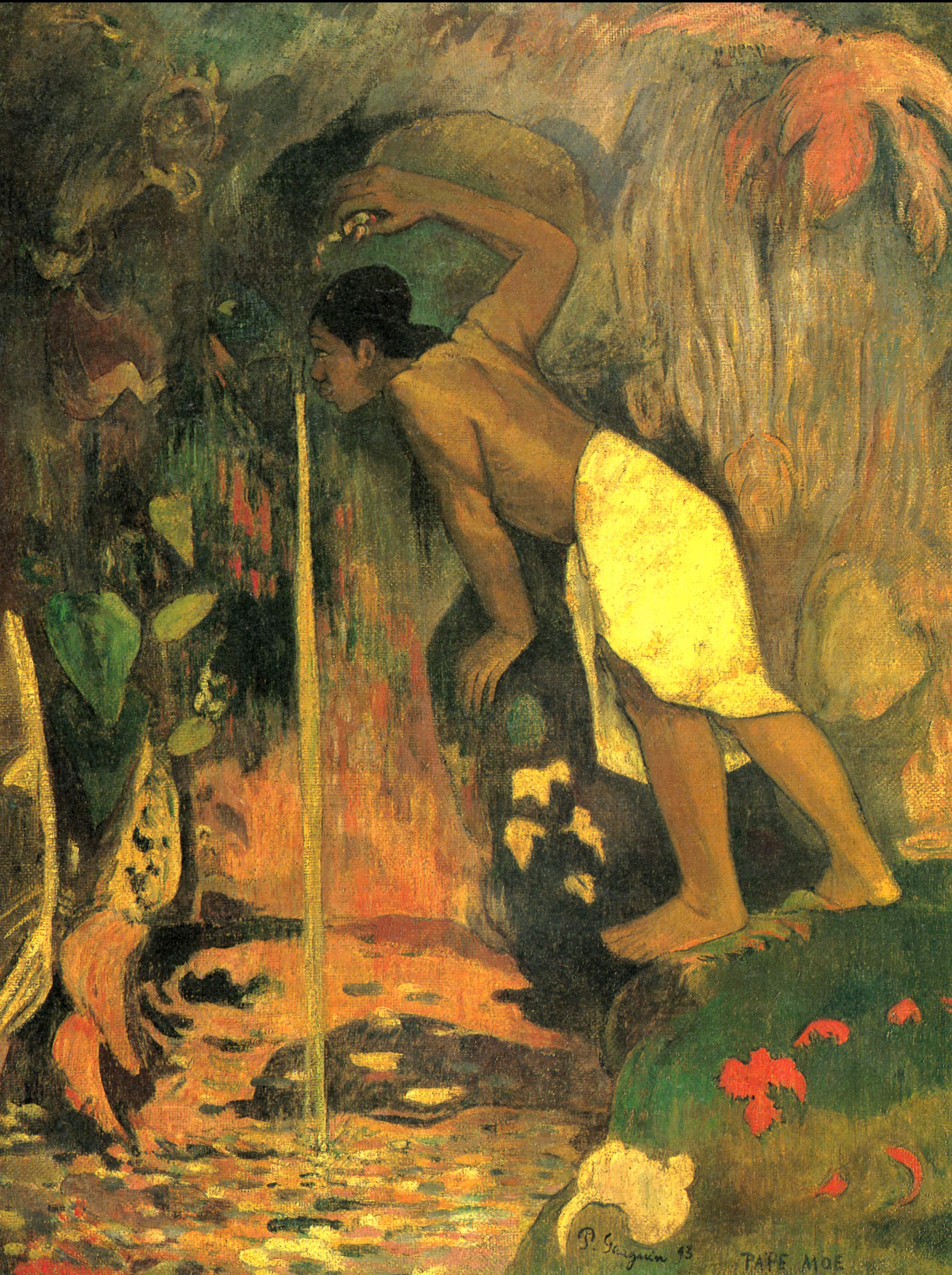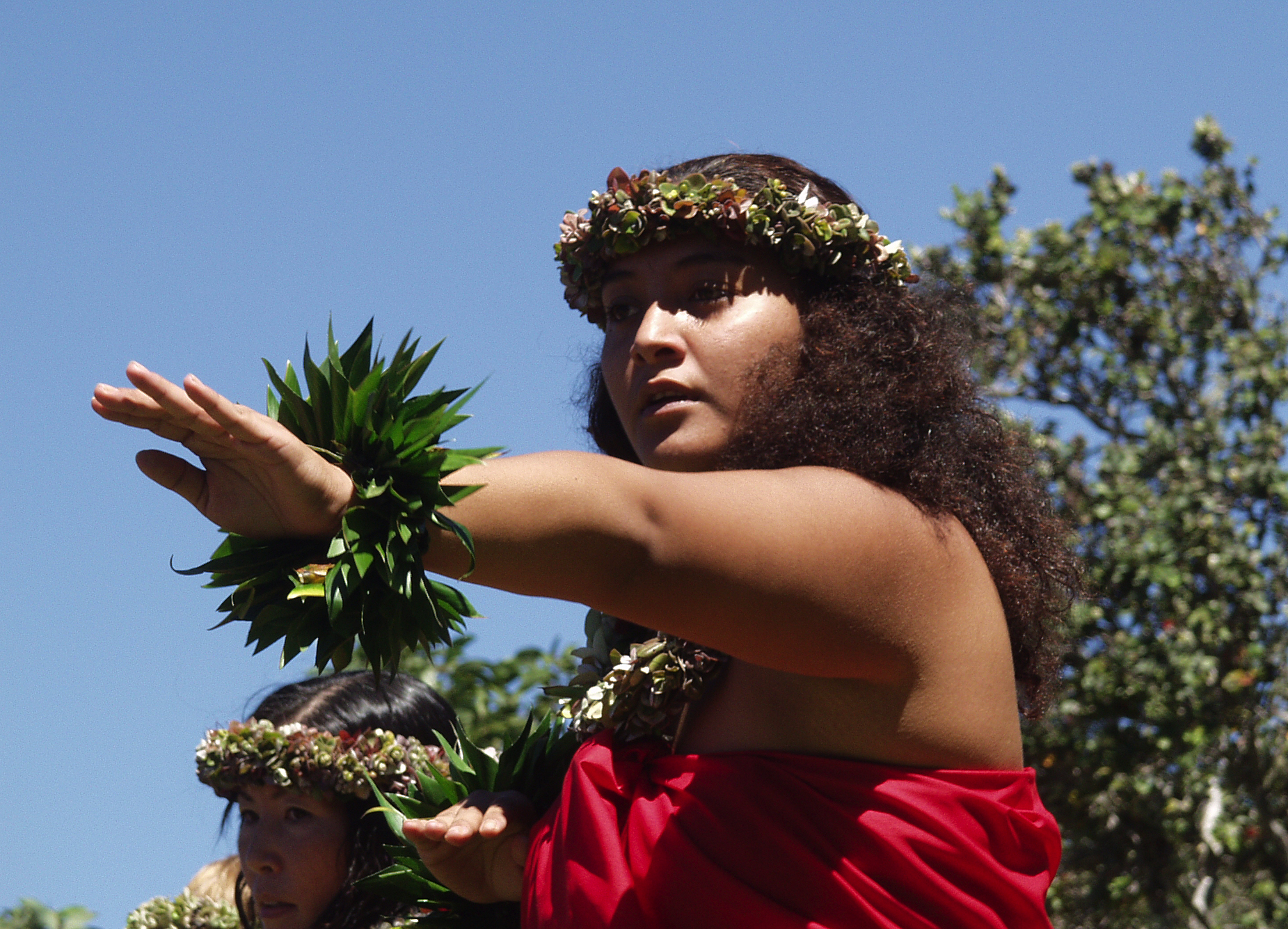|
Māhū
' ('in the middle') in Native Hawaiian and Tahitian cultures are third gender people with traditional spiritual and social roles within the culture, similar to Tongan ' and Samoan '. Historically māhū were assigned male at birth (AMAB), but in modern usage māhū can refer to a variety of genders and sexual orientations. According to present-day māhū kumu hula Kaua'i Iki: In modern popular culture, ''māhū'' is commonly used pejoratively of LGBTQ people. History According to some, in the pre-colonial history of Hawai'i, māhū were notable priests and healers, although much of this history was elided through the intervention of missionaries. Others describe the māhū as not having access to political power, being unable to aspire to leadership roles, and "Perceived as always available for sexual conquest by men." The first published description of māhū occurs in Captain William Bligh's logbook of the Bounty, which stopped in Tahiti in 1789, where he was introduced t ... [...More Info...] [...Related Items...] OR: [Wikipedia] [Google] [Baidu] |
Rae Rae
Rae-rae are trans women in Tahitian culture, a contemporary distinction originating in the 1960s from Māhū (meaning "in the middle"), which is the more traditional social category of gender liminal people of Polynesia. ''Petea'' is a disparaging term for cis-male homosexuality (suggesting "men who sexually desire each other") used in French Polynesia, in contrast to traditional social category aikane used in Hawaii. Whereas mahu are regarded as an integral part of Maori tradition, history, and culture, rae-rae are generally less accepted in Tahitian society. They are regarded as the more modern equivalent to drag queens of the western world, and carry a negative connotation with ties to poverty and sex work. Rae-rae may be more likely than mahu to undergo male-to-female gender reassignment surgery or other cosmetic surgeries. Additionally, the identity of rae-rae has closer ties to homosexuality, in contrast to mahu, which identify more with femininity and "sweetness" and may take ... [...More Info...] [...Related Items...] OR: [Wikipedia] [Google] [Baidu] |
Third Gender
Third gender is a concept in which individuals are categorized, either by themselves or by society, as neither man nor woman. It is also a social category present in societies that recognize three or more genders. The term ''third'' is usually understood to mean "other", though some anthropologists and sociologists have described fourth and fifthGraham, Sharyn (2001)Sulawesi's fifth gender Inside Indonesia, April–June 2001. genders. The state of personally identifying as, or being identified by society as, a man, a woman, or other, is usually also defined by the individual's gender identity and gender role in the particular culture in which they live. Most cultures use a gender binary, having two genders (boys/men and girls/women).Kevin L. Nadal, ''The SAGE Encyclopedia of Psychology and Gender'' (2017, ), page 401: "Most cultures currently construct their societies based on the understanding of gender binary—the two gender categorizations (male and female). Such societies ... [...More Info...] [...Related Items...] OR: [Wikipedia] [Google] [Baidu] |
Rae-rae
Rae-rae are trans women in Tahitian culture, a contemporary distinction originating in the 1960s from Māhū (meaning "in the middle"), which is the more traditional social category of gender liminal people of Polynesia. ''Petea'' is a disparaging term for cis-male homosexuality (suggesting "men who sexually desire each other") used in French Polynesia, in contrast to traditional social category aikane used in Hawaii. Whereas mahu are regarded as an integral part of Maori tradition, history, and culture, rae-rae are generally less accepted in Tahitian society. They are regarded as the more modern equivalent to drag queens of the western world, and carry a negative connotation with ties to poverty and sex work. Rae-rae may be more likely than mahu to undergo male-to-female gender reassignment surgery or other cosmetic surgeries. Additionally, the identity of rae-rae has closer ties to homosexuality, in contrast to mahu, which identify more with femininity and "sweetness" and may take ... [...More Info...] [...Related Items...] OR: [Wikipedia] [Google] [Baidu] |
Kumu Hina
''Kumu Hina'' is a 2014 American LGBTQ related documentary film co-produced and co-directed by Dean Hamer and Joe Wilson. It is based on the story of Hina Wong-Kalu, and stars Wong-Kalu, Haemaccelo Kalu and Ho'Onani Kamai. The film premiered at the Hawaii International Film Festival on April 10, 2014, and had its television debut on ''Independent Lens'' in May 2015. Synopsis Hina Wong-Kalu is a ''māhū'' - a Native Hawaiian ''kumu'' (teacher), activist and cultural icon. She lives her life "in the middle", in between the traditional ways of Hawaii's indigenous, third gender, ''māhū'' culture, ''and'' as a modern transgender person in contemporary Hawaii, trying to preserve and pass on the indigenous culture to the younger generations. ''Māhū'' were once valued and respected as caretakers, healers, and teachers of ancient traditions who passed on sacred knowledge, but missionaries who arrived imposed their language and religious strictures across the Hawaiian islands, and ... [...More Info...] [...Related Items...] OR: [Wikipedia] [Google] [Baidu] |
Hinaleimoana Kwai Kong Wong-Kalu
Hinaleimoana Kwai Kong Wong-Kalu, (born May 15, 1972) also known as Kumu Hina, is a Native Hawaiian ''māhū'' – a traditional third gender person who occupies "a place in the middle" between male and female, as well as a modern transgender woman. She is known for her work as a ''kumu hula'' ("hula teacher"), as a filmmaker, artist, activist and as a community leader in the field of ''Kanaka Maoli'' language and cultural preservation. She teaches ''Kanaka Maoli'' philosophy and traditions that promotes cross-cultural alliances throughout the Pacific Islands. Kumu Hina is known as a "powerful performer with a clear, strong voice", she has been hailed as "a cultural icon". Early life and education Wong-Kalu was born on May 15, 1972 in the Nuʻuanu district of Oʻahu. Her mother is of English, Hawaiian, and Portuguese descent and her father is of Chinese descent. She is the youngest of four siblings. She attended Kamehameha School (1990) and the University of Hawaiʻi at Māno ... [...More Info...] [...Related Items...] OR: [Wikipedia] [Google] [Baidu] |
Samoa
Samoa, officially the Independent State of Samoa; sm, Sāmoa, and until 1997 known as Western Samoa, is a Polynesian island country consisting of two main islands (Savai'i and Upolu); two smaller, inhabited islands (Manono Island, Manono and Apolima); and several smaller, uninhabited islands, including the Aleipata Islands (Nu'utele, Nu'ulua, Fanuatapu and Namua). Samoa is located west of American Samoa, northeast of Tonga (closest foreign country), northeast of Fiji, east of Wallis and Futuna, southeast of Tuvalu, south of Tokelau, southwest of Hawaii, and northwest of Niue. The capital city is Apia. The Lapita culture, Lapita people discovered and settled the Samoan Islands around 3,500 years ago. They developed a Samoan language and Samoan culture, Samoan cultural identity. Samoa is a Unitary state, unitary Parliamentary system, parliamentary democracy with 11 Administrative divisions of Samoa, administrative divisions. It is a sovereign state and a member of the ... [...More Info...] [...Related Items...] OR: [Wikipedia] [Google] [Baidu] |
LGBT Rights In Hawaii
Lesbian, gay, bisexual, and transgender (LGBT) persons in the U.S. state of Hawaii enjoy the same rights as non-LGBT people. Same-sex sexual activity has been legal since 1973; Hawaii being one of the first six states to legalize it. In 1993, a ruling by the Hawaiʻi Supreme Court made Hawaii the first state to consider legalizing same-sex marriage. Following the approval of the ''Hawaii Marriage Equality Act'' in November 2013, same-sex couples have been allowed to marry on the islands. Additionally, Hawaii law prohibits discrimination on the basis of both sexual orientation and gender identity, and the use of conversion therapy on minors has been banned since July 2018. Gay and lesbian couples enjoy the same rights, benefits and treatment as opposite-sex couples, including the right to marry and adopt. Same-sex relationships have been part of Hawaiian culture for centuries. The term '' aikāne'' refers to homosexual or bisexual relationships, which were widely accepted in pre ... [...More Info...] [...Related Items...] OR: [Wikipedia] [Google] [Baidu] |
Hinaleimoana Wong-Kalu
Hinaleimoana Kwai Kong Wong-Kalu, (born May 15, 1972) also known as Kumu Hina, is a Native Hawaiian '' māhū'' – a traditional third gender person who occupies "a place in the middle" between male and female, as well as a modern transgender woman. She is known for her work as a ''kumu hula'' ("hula teacher"), as a filmmaker, artist, activist and as a community leader in the field of ''Kanaka Maoli'' language and cultural preservation. She teaches ''Kanaka Maoli'' philosophy and traditions that promotes cross-cultural alliances throughout the Pacific Islands. Kumu Hina is known as a "powerful performer with a clear, strong voice", she has been hailed as "a cultural icon". Early life and education Wong-Kalu was born on May 15, 1972 in the Nuʻuanu district of Oʻahu. Her mother is of English, Hawaiian, and Portuguese descent and her father is of Chinese descent. She is the youngest of four siblings. She attended Kamehameha School (1990) and the University of Hawaiʻi at Mānoa ... [...More Info...] [...Related Items...] OR: [Wikipedia] [Google] [Baidu] |
Hula
Hula () is a Hawaiian dance form accompanied by chant (oli) or song (Mele (Hawaiian language), mele). It was developed in the Hawaiian Islands by the Native Hawaiians who originally settled there. The hula dramatizes or portrays the words of the oli or mele in a visual dance form. There are many sub-styles of hula, with the main two categories being Hula ʻAuana and Hula Kahiko. Ancient hula, as performed before Western encounters with Hawaii, is called ''kahiko''. It is accompanied by chant and traditional instruments. Hula, as it evolved under Western influence in the 19th and 20th centuries, is called ''auana'' (a word that means "to wander" or "drift"). It is accompanied by song and Western-influenced musical instruments such as the guitar, the ukulele, ukulele, and the double bass. Terminology for two main additional categories is beginning to enter the hula lexicon: "Monarchy" includes any hula which were composed and choreographed during the 19th century. During that t ... [...More Info...] [...Related Items...] OR: [Wikipedia] [Google] [Baidu] |
Bobby Holcomb
Bobby Holcomb (1947–1991) was an artist and musician who wrote popular Polynesian tunes. Biography Bobby Holcomb was born in 1947 in Honolulu, Hawaii, the son of an African-American father from Georgia, and a Hawaiian-Portuguese mother. In the early 1970s, he travelled extensively through Asia, Europe and the Americas. In France, he performed with French pop groups such as Zig Zag Community and Johane of Arch, and he collaborated with French artists Sylvain Duplant, Jean-Pierre Auffredo and Éric Estève. He moved to Tahiti in 1976, and settled on the island of Huahine and learned the Tahitian language. He began composing songs in the Polynesian language, and combined traditional Polynesian melodies with reggae and popular rhythms. He became known to audiences simply as "Bobby". Most of his songs were written in Polynesian, but he also used French and English for some lyrics. His most popular song in Tahiti was "Orio", produced 1985. In addition to music, he was also a pai ... [...More Info...] [...Related Items...] OR: [Wikipedia] [Google] [Baidu] |

.jpg)

